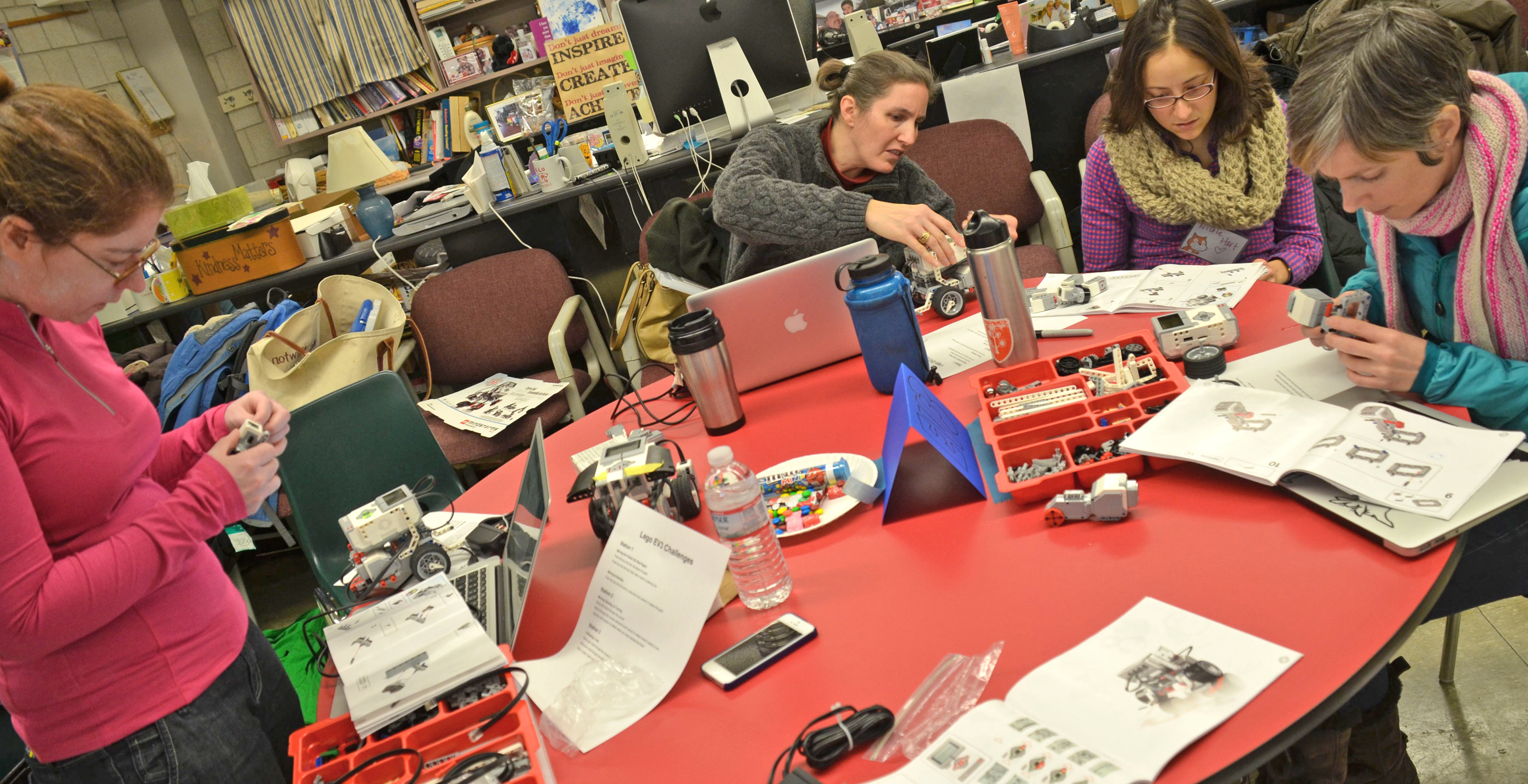
Last Monday, one of Amy Moylan’s first grade parents came into her classroom to share her daughter’s excitement that “her teacher is going to robot school” and that the little girl couldn’t wait to use the robots in her classroom. Ms. Moylan, who teaches at the Amigos School, was one of 20 Cambridge Public School District (CPSD) teachers and specialists taking the “Make It Take It” robotics course facilitated by the Lesley team and CPSD Instructional Technology Specialist guru Ingrid Gustafson. The idea behind the class is that each Cambridge school was offered robotics kits with the intent of bringing robotics and programming into the classrooms. The workshop was taught in the Kennedy-Longfellow School (K-Lo) makerspace over the course of several days.

Depending on their interest and grade level, participants followed three different tracks: the KIBO robot (JK-2nd grades), LEGO WeDo (2nd-5th grades), or LEGO Mindstorm EV3 (6th-12th grades). The group kicked off the first class with exploring their kits and building basic projects to get the hang of how the components fit together. For the KIBO, this meant sorting through the various block commands and input/outputs such as the light and distance sensor. For WeDo, teachers uncovered the LEGO building blocks, motor, distance, and tilt sensor. EV3 participants weeded through an extensive kit filled with hundreds of building components (programming brick, motors, wheels) and sensors (including rotation, ultrasonic, and touch).

Then, the coding began. The KIBO robot is programmed by scanning barcodes on a series of wooden blocks, which can be sequenced depending on the desired outcome. The WeDo comes with it’s own software, but we chose to interface the robots with Scratch, which allows for more creative and open-ended programming. The EV3 Mindstorm software is much more advanced in terms of coding language, but still employs snapping together a series of very detailed/customizable visual commands.

Things really got cooking during the full day Saturday class. The KIBO crew jumped into more advanced programming, integrating repeat blocks and loops to program the robot along a specific path. The WeDo group was met with a Rube Goldberg chain reaction challenge, which entailed them using Scratch and the kit sensors/motors to create one long physical and digital sequence as a group. Over on the EV3 side of the space, folks were abuzz with a series of courses and challenges for their robots, ranging from following a zigzag line of tape to sensing physical barriers to moving objects. For the last class, participants are tasked with developing projects that integrate these kits into the curriculum, with lessons being representative of science, math, ELA, social studies, and art.
Not even a pizza lunch deterred participants from finishing their challenges — teachers were headlong into their projects, programming well past noon. If only their students could have seen them at school on a Saturday: laughing, learning, collaborating, and fully engaged at “robot school.”
Check out the WeDo Rube Goldberg Chain Reaction (note the problem-solving discussion after first attempt fails):
And some EV3 highlights:
For more resources on these robotic kits, check out our course blog: cpsdrobotics.blogspot.com.